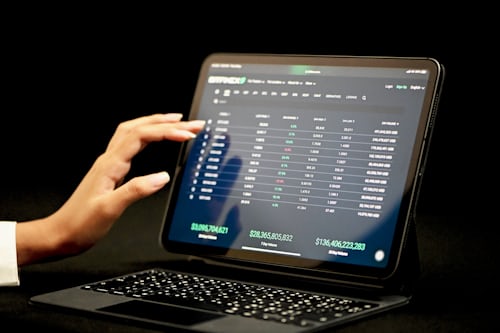Now that you know how indices work, we need to look at how your investment is represented. Crucially, this is either in the form of an ETF or a CFD. Below we look at how the two compare. Read through each section to determine which is suitable for your personal investment needs.
Ownership ratio
If you're looking for a long-term, highly diversified index investment, you should choose an ETF (exchange-traded fund). In its simplest form, the ETF is managed by a top-tier financial institution such as Vanguard or BlackRock.
The provider in question then buys each individual share within the index according to its weighting system. In doing so, the movement of each stock mirrors the index on a comparable basis in deposit exness.
With CFDs (Contracts-for-Difference), you do not own the underlying asset. Instead, CFDs are created by brokers. The overriding concept is that CFDs replicate the real price of an index.
In fact, the CFD in question is likely to track a particular ETF fund provider such as Vanguard. Crucially, the CFD provider does not buy shares in the companies that make up the index.
Dividends
As the ETF fund provider personally holds the shares that make up the index, they are entitled to dividends. For larger index funds such as the FTSE 100 or the S & P 500, this means that the provider is likely to receive dividends throughout the month.
It would be unproductive and costly for the provider to pass on multiple dividend payments as they are received, so you are likely to receive your share quarterly.
This is not the case if you choose a CFD as no shares have been purchased. As a result, you are not entitled to dividend payments.
Index price
Whether you choose an ETF or a CFD, the value of your index investment is determined in a currency such as US dollars or pounds sterling. For ETF index funds, the financial instrument is listed on a major exchange.
For example, Vanguard's FTSE 100 index discussed earlier is listed on the London Stock Exchange. This way you can easily invest in the ETF and get your money out.
The pricing process remains much the same for CFDs, as the instrument replicates a specific index ETF that is listed on the exchange. Therefore, the value of the CFD is likely to mirror that of the ETF it tracks.
Leverage and short selling
When you invest in an index ETF in the traditional sense, you will only trade an amount equal to or less than your account balance. For example, if you have €1,000 in your brokerage account, you cannot trade more than this.
This is not the case with index trading with CFDs, as you can apply leverage. This way you can trade with more money than you have in your account - minus a small interest fee charged by the broker.
If you are based in the UK or the European Union, ESMA limits allow you to trade major stock indices with a leverage of up to 20: 1. This means that with a balance of £200 you can buy or sell a CFD in the S & P 500 at a value of £4,000.
Similarly, traditional index ETFs only allow you to go "long", which means you speculate on the value of the index. However, with index trading via CFDs, you can also take short positions. This means that you can make profits if you think the stock index will lose value.

